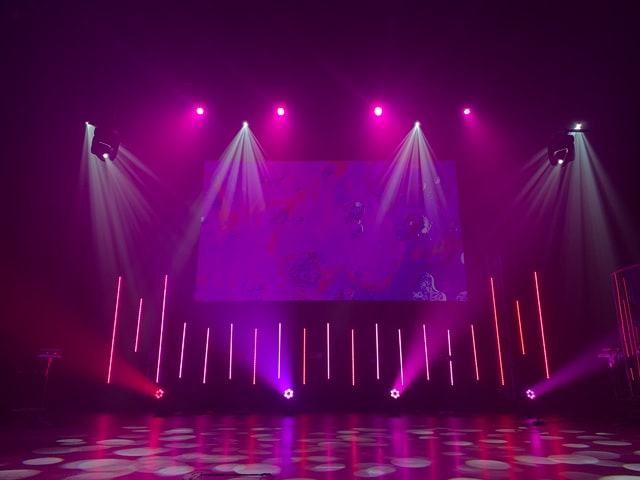When adding text to your artwork, keep visual distractions to a minimum. Using different typefaces will add a new level of complexity to the distraction. We recommend using no more than two different fonts in your artwork, and if you do use two different fonts, use one serif and one sans-serif font.
Here are some additional typeface suggestions to think about.
Consider the Audience Point of View
No matter how impressive your concert stage is if your audience can’t see you, no matter how many special effects you use, your show will be a flop. Take a closer look at the audience’s perspective before you start creating the stage.
Is your venue on an incline or a tiny hill so the audience must gaze up? Is it likely that folks in the rear of the venue won’t be able to see your performance? Is this an event with a high turnout or one with a smaller turnout?

You’ll need to change your stage design based on the visibility of your audience, the size of the crowd, and the venue’s design to guarantee that everyone in the audience can see every portion of your performance.
Create Lasting Memories with Memorable Lighting
Knowing how to effectively light a stage necessitates a combination of technical know-how and a dash of imagination. However, if you want to take your concert stage design to the next level, you’ll need to invest in mood-setting lighting effects.
You can engage with an event production firm like Onstage Systems, which has an extensive inventory of LED fixtures, decor lighting, atmospheric lights, dimmers, and any other light fixture you would require, in addition to stage and spotlights.
These improved lighting sets will bathe your venue in vibrant colours and completely shift the ambience. Aligning your performance with your lights is the key to building an effective lighting system.
If you Cant Build a Tall Stage, Build a Wide One
The size and scale of your stage have an impact on the audience’s perception of the performance. A small stage with a 360-degree crowd provides an intimate encounter, whereas a big stadium with a giant stage provides a completely different concert experience.
Your imagination is infinite when it comes to staging designs, but the technical limitations of your location may limit the size of your stage.
Choose a large stage that envelops your audience instead of a towering platform with sky-high lights and special effects. If your site is indoors and the height of the building is a constraint, wide stages are ideal. A larger stage also helps you to think more creatively.
Putting a Stage Design Together
The consumer experience should be your top focus when designing your musical stage. Concertgoers want to be completely immersed in the performance, with no other influences interfering with their enjoyment.
Although these four suggestions can help you have a better concert experience, there are always unanticipated factors that can complicate your route to success. Anything can happen, whether it’s bad weather, a last-minute venue change, or a container with missing equipment visit https://fr.crazyvegas.com/
for more.


Recent Comments